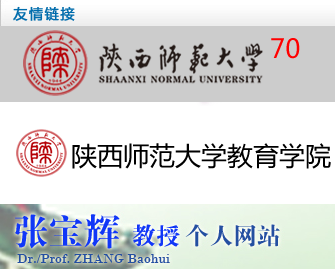
Lecture
Speaker:Wouter van Joolingen&Sui Lin GOEI
Report Topic
Stimulating Creative Thinking of Children Diagnosed with High Functioning Autism and Asperger Syndrom Through Drawing-based Modeling
Abstract
In this presentation it is explored how creative thinking of students with high functioning autism (HFA) and Asperger syndrome (AS) can be stimulated in an environment in which they can construct and explore models based on interactive drawings, so-called drawing-based modeling. The aim is to analyze what implications this could have for the learning of students’ with HFA/AS. Their learning profile is different from other students in the same age. Studies have shown that teachers mainly have noticed three areas the HFA/AS students differ from other students at the same grades: social skills/interactions, behavioral rigidity/interests and language/communication. These areas are close to the criteria for diagnosis, but more focused on the teaching situation. To understand the learning processes of students with HFA/AS, three theoretical concepts for learning are important: discernment, simultaneity and variation. As opposed to normal developed peers, students with HFA/AS often have a (very) well-developed ability in distinguishing details, making it difficult for them to distinguish between relevant and irrelevant information. They need support in seeing that at different levels of aggregation objects and their properties can simultaneously play different roles in part/whole relationships. Finally, they need support in recognizing and discerning critical variation in objects’ properties against an invariant background of those already discerned. Where for their normal developed peers it is ‘normal’ to understand not already discerned variables in an invariant background, for children with autism this is not the case. They need additional learning support to understand what ‘normal’ means for whom, where and how.
In drawing-based modeling (DBM) students build models of real or imaginary systems based on drawings. They first draw the elements in their model and then assign behavior to these elements. Based on these specified behaviors the drawing turns into an animation. Children have shown to be able to use this method and the software that comes with it to model systems such as the spreading of disease, traffic jams and the solar system. Essential in DBM is creative thinking in the identification of objects and behavior and identifying the essential properties of each of the objects. For this, DBM offers a playful but structured environment that allows physical manipulation of objects’ properties. As the amount of detail in objects can be varied and controlled, students with HAF/AS can be offered an environment that can be adapted to their level of discernment and in which they can see which variation is essential for understanding and which is not. Using such a controllable environment that allows for creative expression, we think children with autism can be supported in the three concepts (discernment, simultaneity and variation) that are important in learning. Using some examples from DBM, the possible ways teachers can use this environment in supporting students with HFA/AS will be discussed.
Personal website:http://www.uu.nl/staff/WRvanJoolingen/0



